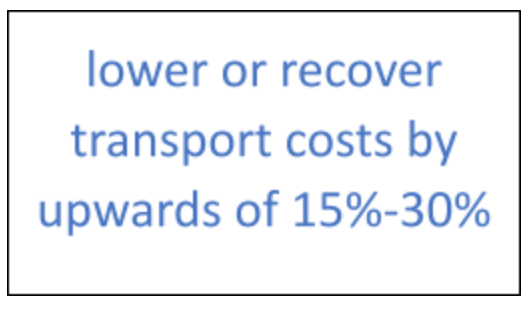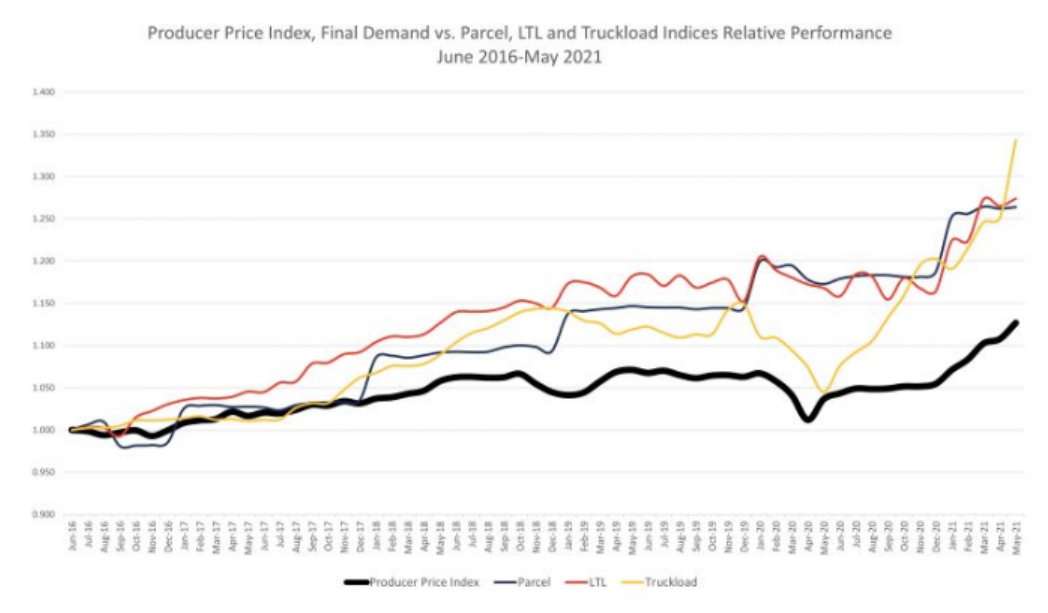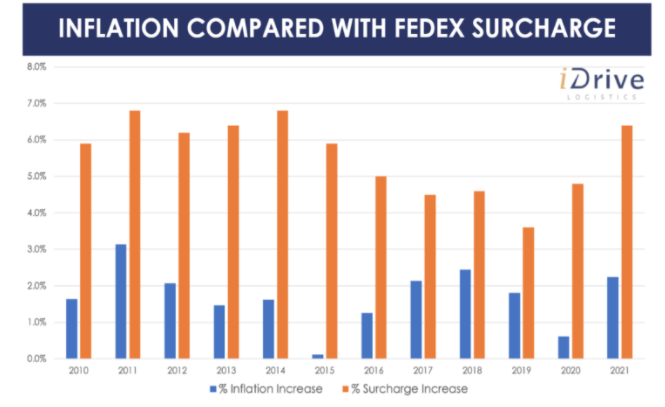The Role of Timely, Accurate Estimation to Address Rising Transport Costs
The Role of Timely, Accurate Estimation to Address Rising Transport Costs
To start off our series on how to stay ahead of rising supply-chain costs, we are taking a closer look at the role freight estimation plays in addressing cost and influencing buying behavior.
Estimating the cost of freight at quote is often approached in generic terms with either flat rates or standard percentages driving the calculation. This approach is understandable; for many organizations, freight is a complex. Multiple carriers with multiple terms and contracts … across diverse geographies … against a varied portfolio of products … with frequent changes in base rates and accessorial charges …powered by different technologies and platforms_1. Reverse engineering drivers of costs to properly estimate can be daunting. If rates and customer expectations held constant, a simple flat rate or standard percentage approach can work.
As we have all experienced; however, the world does change; sometimes dramatically. Over the past 18 months the cost of transport has skyrocketed across all modes and is expected to stay there2. Volatility has also increased, as has complexity with additional surcharges and levies added to already high costs3.
Customer demand and buying behavior have also changed_4, with expectations in the B2B following the new normal in B2C for expedited, immediate shipments. Some companies no longer want to store and manage inventory expecting the manufacturers, 3PLs and distributors to handle it. The Amazon effect has done more than change consumer expectations, it has changed the way businesses buy_5.
With high costs, market volatility, complexity and rapidly shifting customer demand as a backdrop; the role of accurate, timely transport estimates becomes critical for recouping and/or managing freight charges. For businesses that charge for shipping based upon initial quotes; accurate estimates obviously mean less delta between estimates and actuals and a greater opportunity to fully recoup charges. Unfortunately, all too often, estimates only cover standard rates or are based upon a flat fee scale, leaving behind assessorial charges, surcharges and market volatility for the business to deal with, driving down order level profitability.
For businesses that don’t charge freight, or offer free freight under some set circumstances, estimation at time of quote is just as critical, but often overlooked. Why estimate the freight charge if it’s free? Just choose the lowest cost option at time of shipment that meets the promised delivery date, right?
Accurate, timely estimation underpins your ability to shape pricing, drive customer profitability, inform freight policy, set appropriate customer expectations and perhaps most importantly, influence buying behavior. We’ve seen some of the largest retailers taking advantage of buying behavior in the consumer space for a number of years, Amazon being the first and most obvious, but many large eCommerce retailers have followed suit; reshaping their supply chains by influencing demand and reducing overall logistics costs by up to 32% as a result_6. An incredible result, considering Amazon lost $7.2b on shipping alone in 2016 7.
Customer demand and buying behavior is driven by expectations. Amazon, Dell, Walmart, Target among others influence this behavior by offering incentives for choosing options that lower supply chain charges. Every Prime member has experienced it; get your order tomorrow … or earn a $1 towards a digital purchase to get it the day after. What’s a day? Sometimes it matters, but often it does not; often enough that customers self-select in while Amazon reaps the benefit of lower costs.
Retailers are only able identify and offer these incentives because of hyper accurate, timely fulfillment and delivery cost estimates, and a readily available eCommerce platform to deliver the incentive to their customer. Fortunately, for B2Bs, the same concept applies. Our experience has shown us that companies can lower or recover outbound transportation costs by upwards of 15%-30% by influencing ordering behavior. Recent research by MIT_8 supports this affect.
So what can you do to improve the accuracy and precision of your freight estimates prior to an order being placed? Is your free freight offer structured in a way that optimizes for revenue and profit margin? What can you do to influence the way a customer orders (e.g., when the order is placed, when it is expected to arrive, the size of the order) to improve the economics of serving that order and serving that customer over the long term?
All of these questions start with a baseline understanding of the cost to serve your business. Once understood, you can reduce and recover these costs to improve profitability using practices informed and powered by these cost to serve models – topics we will delve into in future posts. Click here to learn more.
About Synapsum
Synapsum offers a set of software-as-a-service solutions to help your business understand cost-to-serve and take actions from insights, whether orchestrated through commercial teams or directly influencing customer buying experiences. Synapsum solutions transcend functional silos that limit profit potential using agile plug-and-play solutions supporting your business to reduce or recoup costs, increase the success rate of profit optimization programs and break down barriers to reach your full financial potential.
FedEx & UPS 2020 Shipping Rate Increases Include Major Changes | Red Stag Fulfillment
Why Consumer Demand For Faster Shipping Will Force Supply Chains To Change Strategies (forbes.com)
Why retailers like Amazon are embracing no-rush delivery (modernretail.co)
The cost of convenience: Amazon’s shipping losses top $7B for first time - GeekWire
Microsoft Word - 43610682-Final - Incentiving No-Rush Delivery in Omnichannel Retail.docx (mit.edu)



